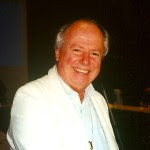The Re-affirmation of Humanitarian International Law
BY TRANSCEND MEMBERS, 9 January 2017
Rene Wadlow – TRANSCEND Media Service
 6 Jan 2017 – Current armed conflicts in Afghanistan, Yemen, Syria-Iraq-ISIS-Turkey, Libya, Somalia and elsewhere have led to repeated and conscious violations of humanitarian international law such as attacks on medical facilities and personnel, killing of prisoners-of-war, the taking and killing of hostages, the use of civilians as “human shields” and torture.
6 Jan 2017 – Current armed conflicts in Afghanistan, Yemen, Syria-Iraq-ISIS-Turkey, Libya, Somalia and elsewhere have led to repeated and conscious violations of humanitarian international law such as attacks on medical facilities and personnel, killing of prisoners-of-war, the taking and killing of hostages, the use of civilians as “human shields” and torture.
At this stage, there is a pressing need to reflect upon what actions should be taken to implement humanitarian international law in response to increased challenges. We would like to stress the need for a United Nations-led conference on the re-affirmation of humanitarian international law stressing its application to non-State parties. Non-State actors such as ISIS or the Afghan Taliban, are increasingly involved in armed conflicts but were largely not envisaged when humanitarian international law was being drawn up. The, the conference would highlight the need to apply humanitarian international law both to States and to non-State actors. (1)
Such a conference would bring together into a coherent synthesis the four avenues of humanitarian international law: (2)
- The Geneva Conventions – Red Cross-mandated treaties;
- The Hague Convention traditions dealing with prohibited weapons, highlighting recent treaties such as those on land mines and cluster munitions;
- Human rights conventions and standards, valid at all times but especially violated in times of armed conflicts;
- The protection of sites and monuments which have been designated by UNESCO as part of the cultural heritage of humanity, highlighting the August 2016 decision of the International Criminal Court on the destruction of Sufi shrines in northern Mali. (3)
Such a re-affirmation of humanitarian international law should be followed by efforts to influence public consciousness of the provisions and spirit of humanitarian international law. This can be done, in part, by the creation of teaching manuals for different audiences and action guides. (4)
I would cite a precedent for this re-affirmation of humanitarian international law from personal experience. During the Nigeria-Biafra civil war, I was part of a working group created by the International Committee of the Red Cross to respond adequately to the challenges of this conflict which was the first African armed conflict that did not involve a colonial power. The blocking of food flows to Biafra and thus starvation as a tool of war was stressed in our work. (5)
One conclusion of the working group was the need to re-affirm the Geneva Conventions and especially to have them more widely known in Africa by writing Africa-focused teaching manuals. Thus, as at the time I was professor and Director of Research of the Graduate Institute of Development Studies, Geneva, I collaborated with Professor Jiri Toman, Director of the Institut Henri Dunant on the creation of such a manual to be used in Africa. Today, such culturally-sensitive manuals could be developed to explain humanitarian international law.
Such a re-affirmation conference would be welcomed by civil society organizations related to relief, refugees, human rights and conflict resolution. A certain number of these organizations have already called attention to violations and the need for international action.
NOTES:
1) see Andrew Clapham. Human Rights Obligations of Non-State Actors (Oxford: Oxford University Press, 2006)
2) see Sydney D. Bailey. Prohibitions and Restraints in War (Oxford: Oxford University Press, 1972)
3) see Rene Wadlow “Guilty Plea in Cultural Destruction Case” Peace Magazine (Canada) Oct-Dec 2016
4) see Jacques Freymond. Guerres, Révolutions, Croix-Rouge (Geneva: Institut Universitaire de Hautes Etudes Internationales, 1976) and Thierry Hentsch. Face au blocus. La Coix Rouge internationale dans le Nigéria en guerre (Geneva: Institut Universitaire de Hautes Etudes Internationales, 1973)
5) see as a good example of an action guide Paul Bonard. Les Modes d’Action des Acteurs Humanitaires. Critères d’une Complémentarité Operationelle (Geneva, CICR, no date given)
______________________________
René Wadlow, is president and a U.N. representative (Geneva) of the Association of World Citizens and editor of Transnational Perspectives. He is a member of the TRANSCEND Network for Peace, Development and Environment.
Copyright mediaforfreedom.com
